2016 Yamaha WR450F Review
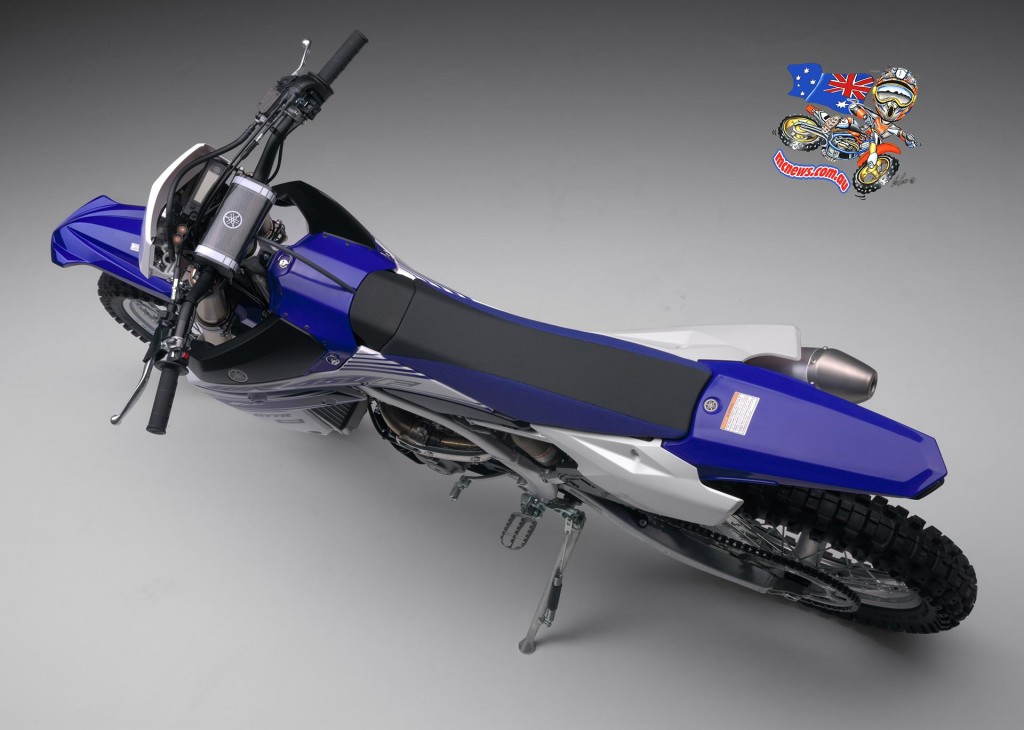
By Todd Jarratt – Images by Greg Smith
When Yamaha introduced the redesigned WR250F in 2015, many consumers questioned why its big brother WR450F didn’t receive the same major updates. Then one year later as the 2016 models rolled around, it seemed the WR450F was absent from the spotlight again. That was until the Australian Moto GP in mid October, when Yamaha Australia revealed the completely redesigned WR450F.
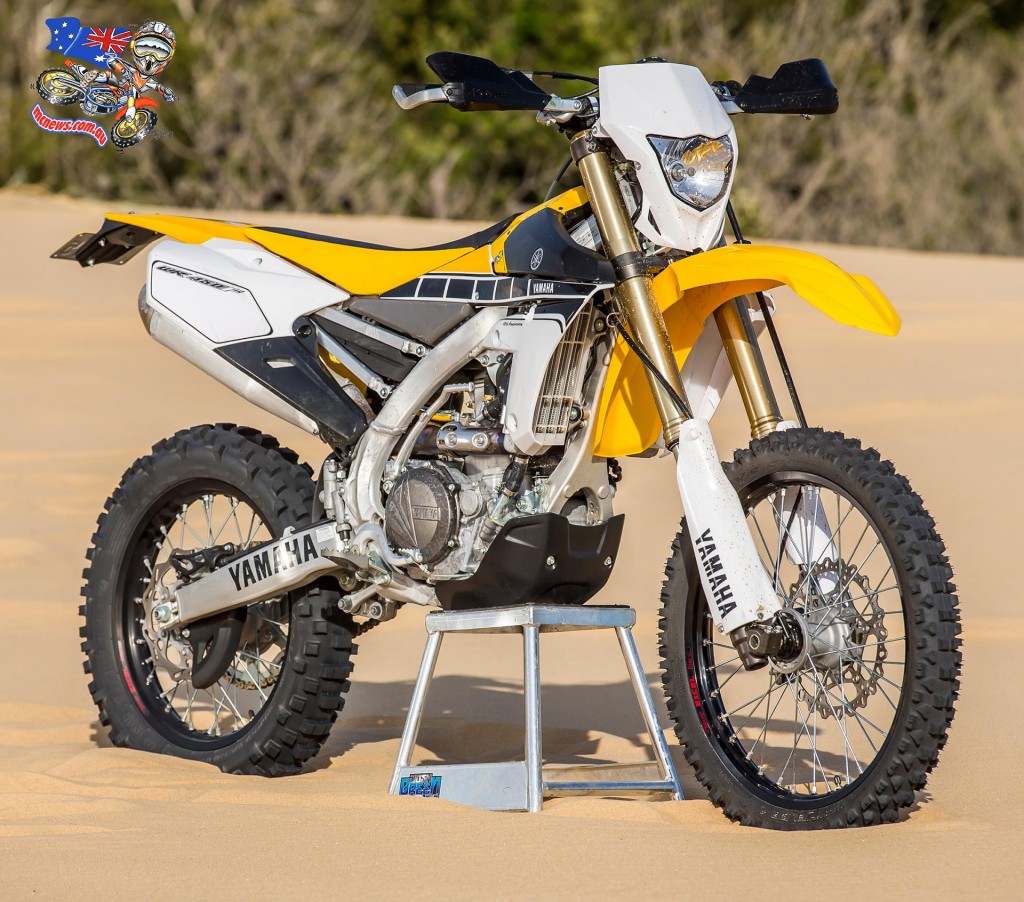
The latest WR saw significant research and development input by Oceanic riders, especially from former MXGP runner up Josh Coppins. The new machine is based heavily around the world championship winning YZ450F’s engine, chassis, suspension, transmission and braking systems, which is directly reflected in the latest off road bike’s reduced weight, increased power and improved stability.
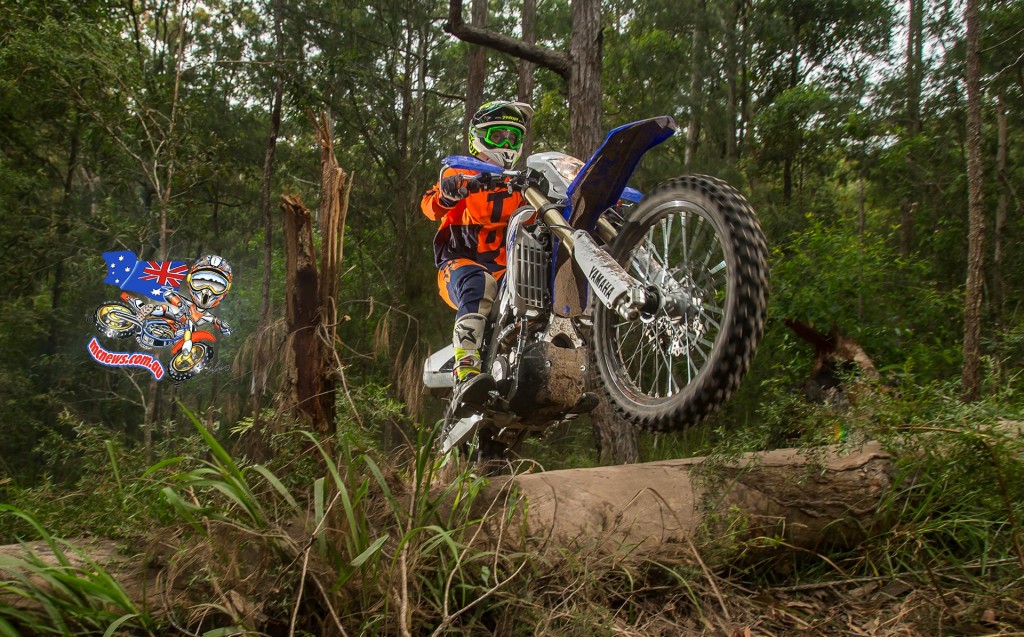
Since the inception of Yamaha’s revolutionary WR in 1998 with the WR400F, there have been five major updates to the series. The WR426F was introduced in 2001, followed by the first WR450F in 2003. The range then saw the aluminium frame introduced in 2007 and fuel injection in 2012, but until this season very few updates have recently been pushed through. This hasn’t slowed domestic sales for the WR450F though, as Australia is listed as Yamaha’s highest selling WR nation, and these numbers are only expected to boom following the model’s complete overhaul for 2016. A quick look at some of the major updates sees a 6kg weight reduction, updated chassis, renewed suspension, engine redevelopment, updated transmission, and improved braking package.
Chassis
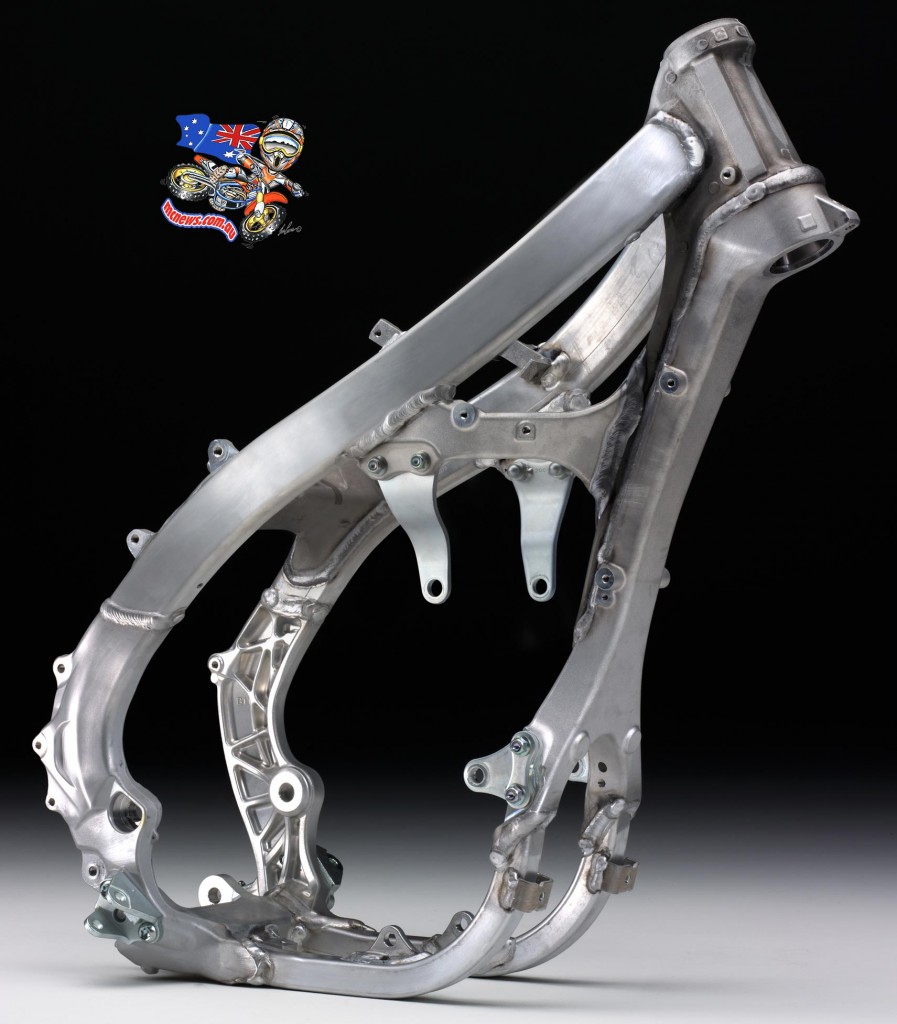
For 2016, Yamaha have introduced the YZF aluminium bilateral beam frame to the WR450F, which is immediately noticeable when throwing a leg over the bike.
The WR hosts a very balanced feel from front to back, with the comfortable seat to bar height being paired with the 5mm lower foot peg position to provide a very central seating point. The only variation between the YZ and WR frames is that to tailor the WR450F to more off road terrain and improve the level of rider feedback, a 2mm reduction in front engine mount size has been made. That being said, this small adjustment was not noticeable in my time on the bike, which is actually for the better as I am now not only a huge fan of the current YZF geometry, but the WRF’s as well.
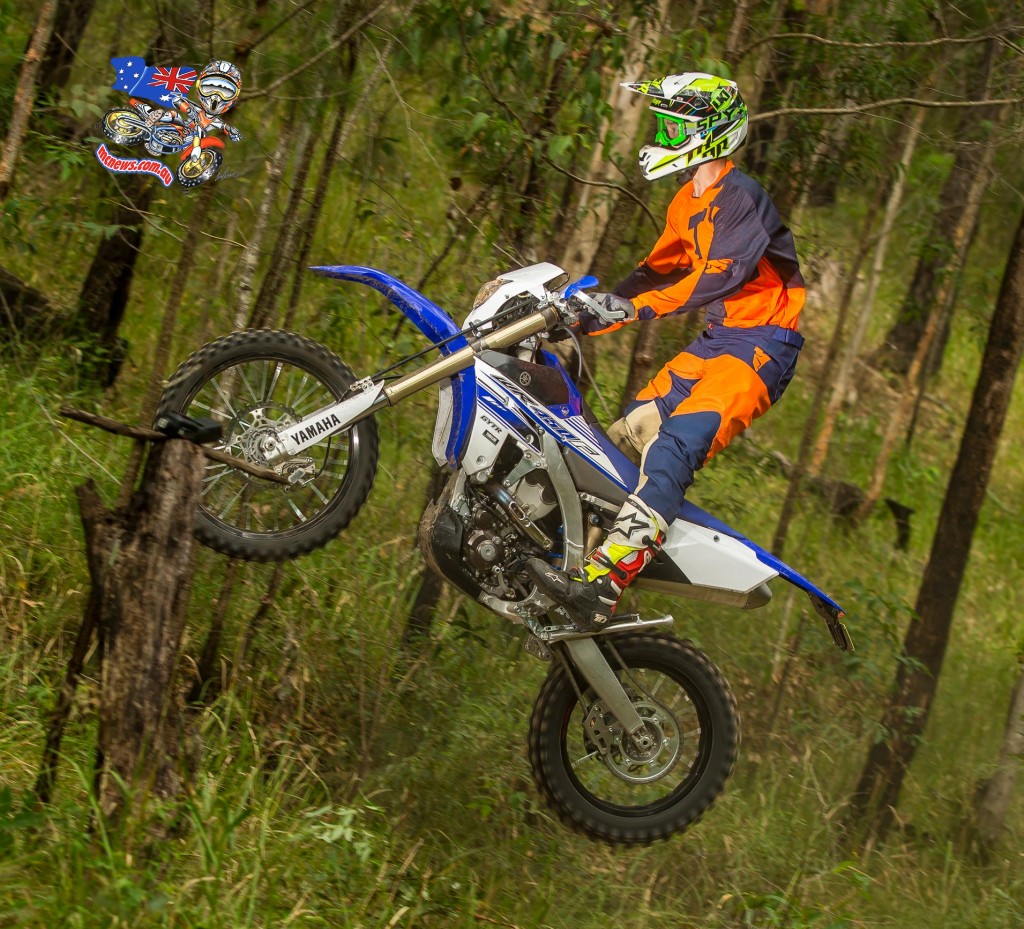
The WR450F also features the new four point bar positioning set up, which is a great addition to the off-road package as it allows riders to customise their setup without the expense of aftermarket parts. The bar adjustments include +26.5mm, +16.5mm, standard, and -10mm, with each setting making a huge difference to cockpit size. For myself, standing at around 176cm and having a fairly orthodox riding style, the ‘out of the box’ standard bar position was perfect both in the tight technical bush loops, and out on the open trails. I made two small adjustments in rolling the bars back and lowering the levers slightly, but this was simply for personal preference .
In addition, the WRF also features the standard off-road size 18” and 21” inch wheels, but now comes with black Excel rims rather than the plain silver. The Excel rims are partnered with the Metzeler 6 Day Extreme tyres, which have been utilised as they meet the FIM specifications and are tough as nails.
These few off-road modifications are also accompanied by the frame mounted side stand, radiator fan, and head and tail lights. The radiator fan was one option that was most definitely noticeable on the trails as the hot days and tight trails didn’t allow for much natural cooling, so the fans were working overtime doing their thing on all of the WR450F’s.
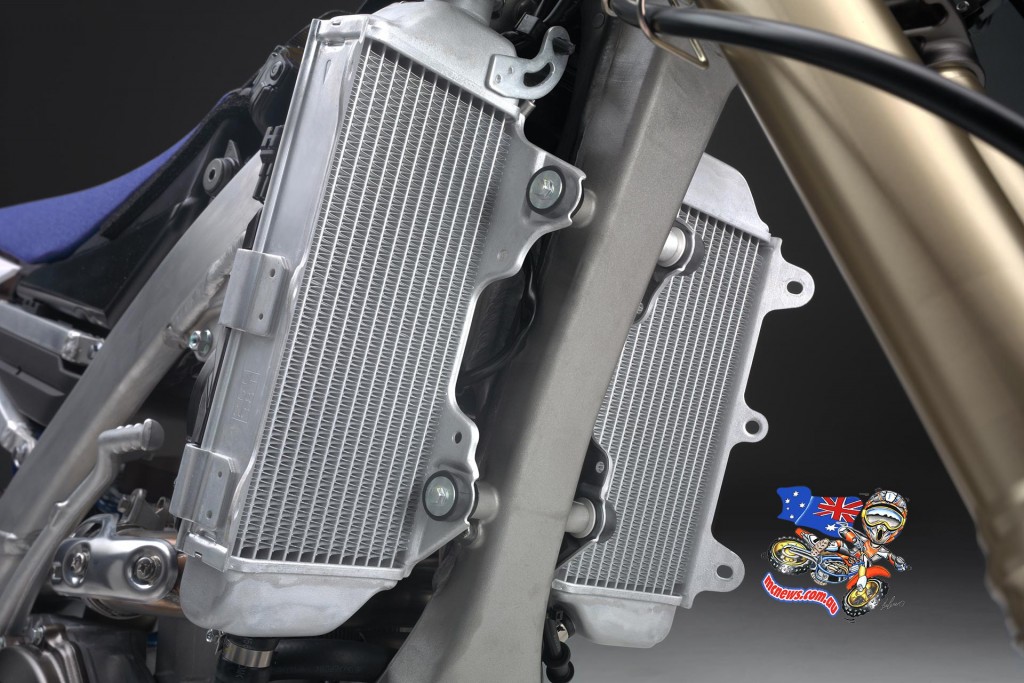
Suspension
Similar to the chassis, the 2016 WR450F’s suspension package is built with a base from the YZ450F. The pair share the KYB air-oil separation (AOS) fork, 22mm offset, 114mm trail and 26.2° caster angle, but the WR utilises a softer internal setting to better suit the needs of trail riding.
It is a similar story at the rear end of the machine with the WR featuring the YZF spec KYB shock, just with a revised softer enduro setting. These small refinements were made to ensure the WRF can handle all aspects of off-road riding, from technical log sections to high-speed straights.
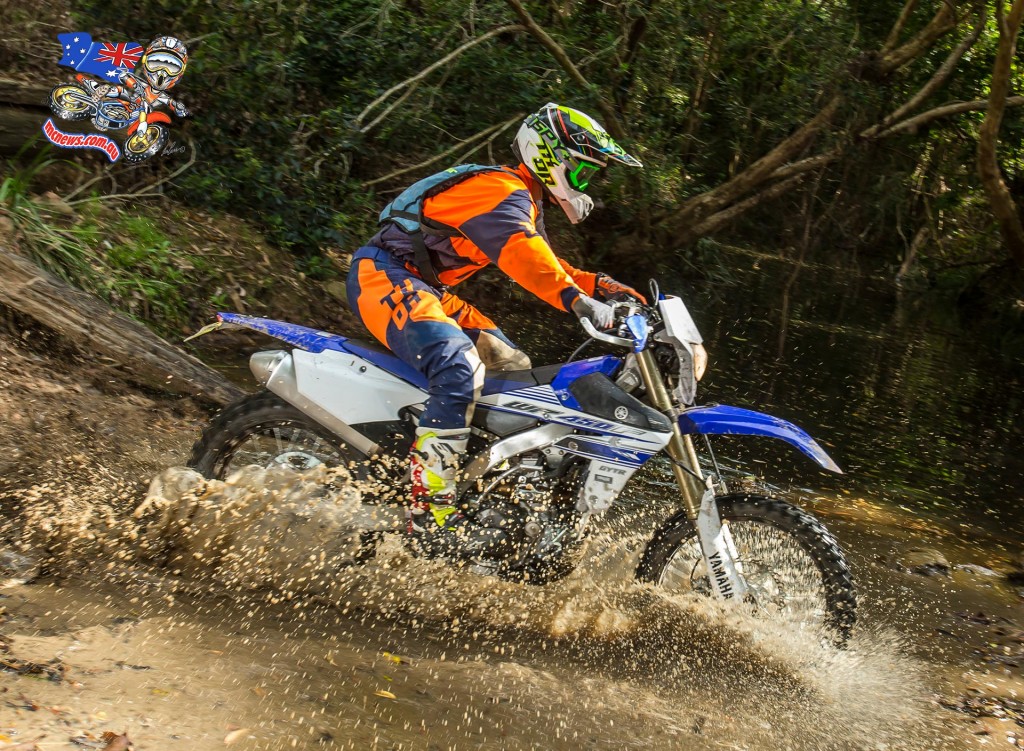
As a whole, when compared with previous models the new WR450F provides a seriously improved damping feel and superior handling characteristics.
In my first two rides of the WRF, the front end felt a little soft in the stroke while braking, so we made a few small clicker adjustments and that quickly halted the issue.
I’m a rider who typically prefers a very short, plush initial followed by a long, stern fork compression, so the clicker adjustments we made were able to provide that feel and allow me to get comfortable with the bike.
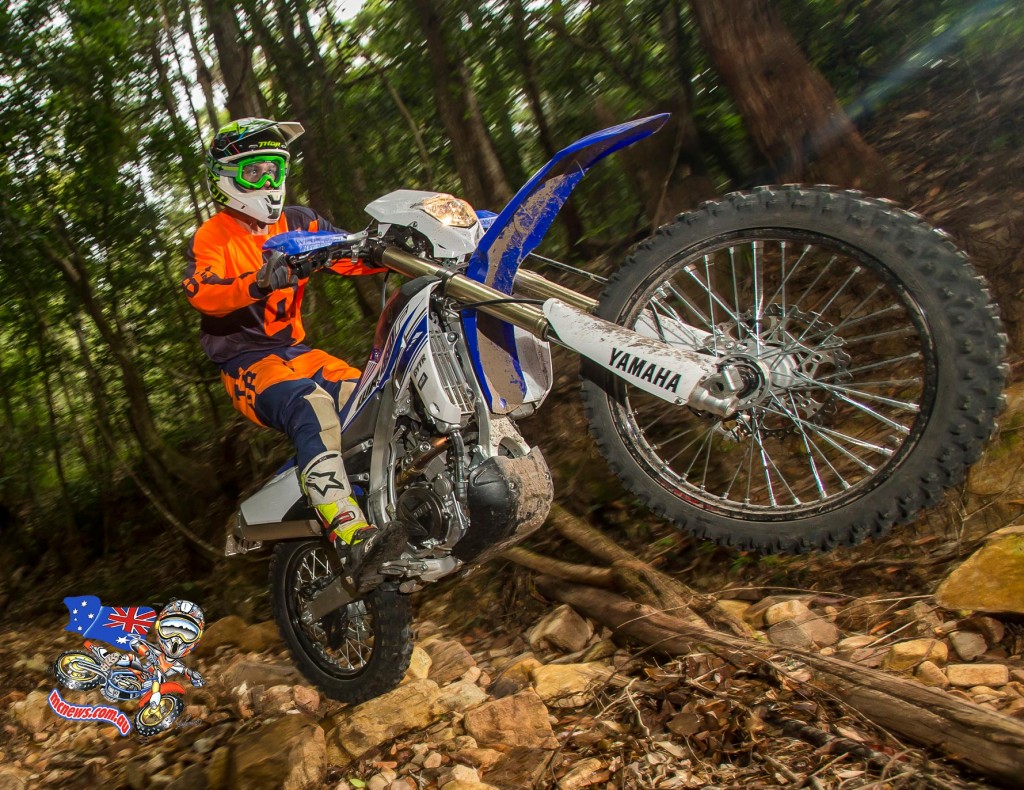
The WR also didn’t rock noticeably under brakes and it sat square when accelerating out of hard packed flat turns, which is crucial when trail riding. The bike was also very balanced in lateral movements, which ultimately meant I had no concerns in tipping the bike in during both low and high-speed turns.
The suspension package Yamaha have developed for the 2016 WR450F functions successfully in complementing the updated chassis and establishing a very predictable, balanced ride. Overall, I’m a big fan of the updates and know that both the fork and shock settings could be easily manipulated to suit any level of rider. Click below to continue through to page two.
Click through to page two for 2016 Yamaha WR450F Engine and Braking impressions























